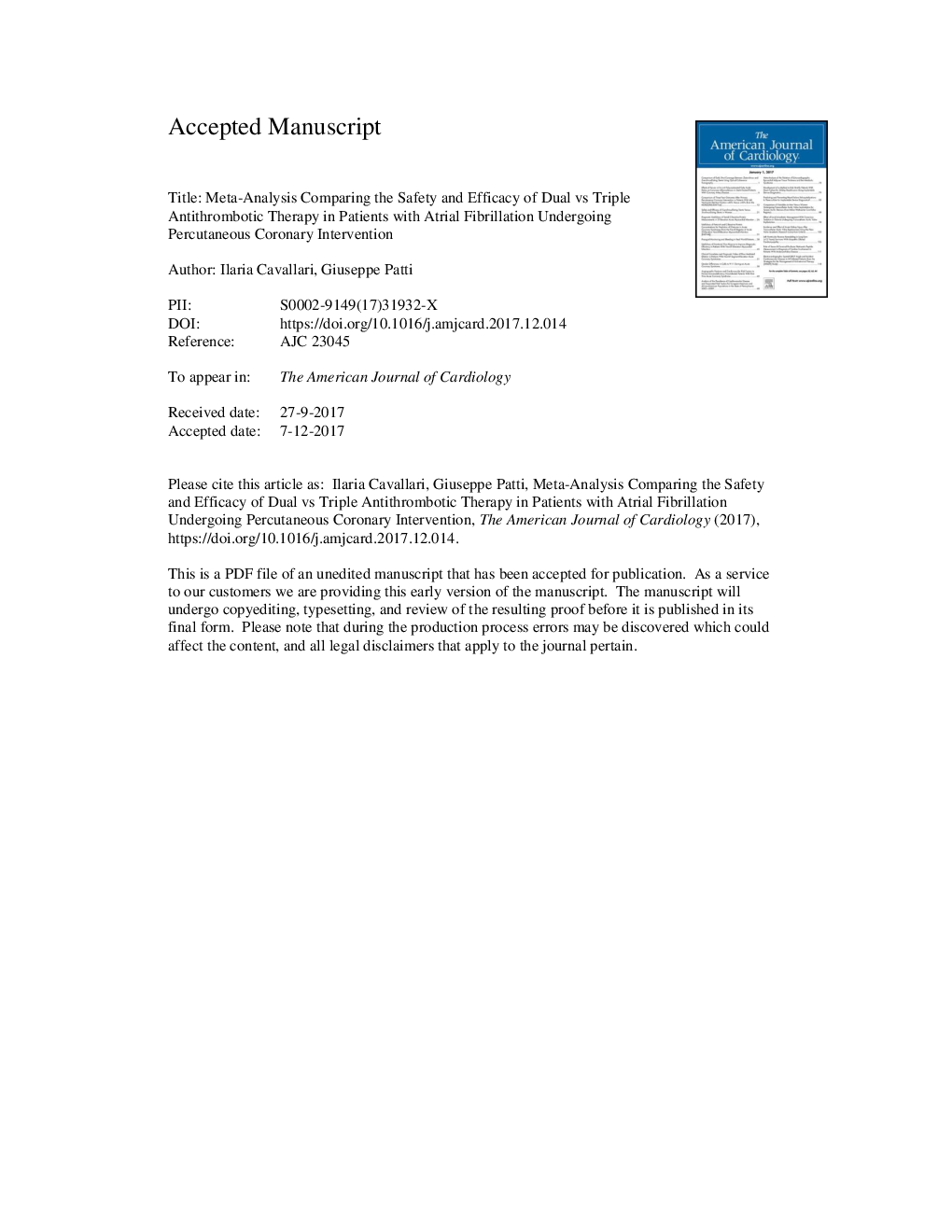| Article ID | Journal | Published Year | Pages | File Type |
|---|---|---|---|---|
| 8651470 | The American Journal of Cardiology | 2018 | 23 Pages |
Abstract
In patients with atrial fibrillation undergoing percutaneous coronary intervention (PCI), the effectiveness and safety of dual compared with triple antithrombotic therapy are a matter of debate, especially when considering the prevention of end points at low incidence, such as myocardial infarction (MI), stent thrombosis, or mortality. This study-level meta-analysis included 4 controlled randomized trials and 6,036 patients with a clinical indication to chronic oral anticoagulation (OAC) after PCI, mainly for atrial fibrillation. Patients receiving dual therapy with a single antiplatelet agent, essentially a P2Y12 inhibitor, plus OAC were compared with those treated with triple therapy (aspirin, a P2Y12 inhibitor, and OAC). The incidence of the following outcomes was evaluated: Thrombolysis In Myocardial Infarction major and minor bleeding, MI, stent thrombosis, stroke, cardiovascular, and all-cause death. Occurrence of Thrombolysis In Myocardial Infarction major bleeding was significantly lower in patients treated with dual therapy: 1.97% versus 3.53% in those on triple therapy (odds ratios 0.55, 95% confidence interval 0.39 to 0.78, pâ=â0.0007); rates of minor bleeding were also decreased in the former (57% relative reduction). With dual therapy, there was not a statistically significant difference in all-cause and cardiovascular mortality (3.81% vs 4.01%, pâ=â0.37 and 1.62% vs 2.02%, pâ=â0.42, respectively). Incidence of MI (3.25% vs 2.78%, pâ=â0.61), definite stent thrombosis (0.92% vs 0.66%, pâ=â0.46), and stroke (1.28% vs 1.32%, pâ=â0.85) was similar in the 2 treatment strategies. In patients with long-term indication to OAC after PCI, compared with triple therapy, dual antithrombotic therapy reduces bleeding, without an excess in thromboembolic and ischemic cardiac events.
Related Topics
Health Sciences
Medicine and Dentistry
Cardiology and Cardiovascular Medicine
Authors
Ilaria MD, Giuseppe MD,
